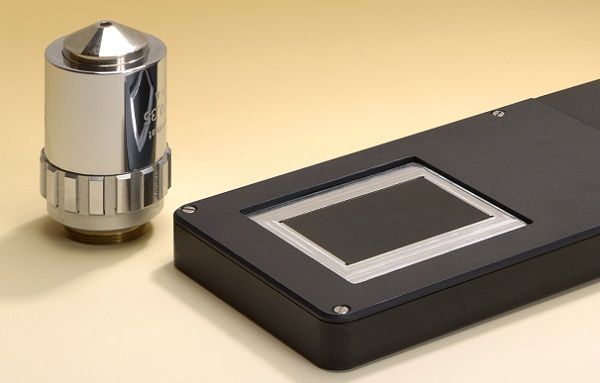Miniature Mobile Microscope Magnifies its Uses

Since Galileo ground his own glass for the lenses of his occhiolino, scientists and doctors have relied on microscopes. And for those last 486 years, microscopes have remained too expensive, cumbersome and delicate to carry around. By combining specially designed lenses with a powerful computer, a new iPod-size portable microscope may change that, taking magnification ability out of the laboratory and out to the field or point of care.
Unlike regular microscopes, which use lenses in series to magnify images, this portable microscope uses an array of tiny lenses set side-by-side. Each lens takes a high-resolution picture of the subject, which the microscope's built-in computer assembles into a large mosaic image. Each tiny lens gets set into a plate of glass, three of which are stacked together for extra magnification.
Although originally designed to perform point-of-care analysis on precancerous skin blotches, scientists use microscopy in almost every field, giving this portable microscope nearly endless applications. Need to analyze a bullet at a crime scene? Find a geological sample? Inspect a hairline fracture in a pipe? This microscope could potentially do it all.
Additionally, the engineers at the Fraunhofer Institute produced the microscope using common industrial practices. That allows for low-cost production, and eventually, widespread adoption and distribution.
For those looking to get their hands on one of these right now, slow down. Despite the efficient production methods and proven technology, Fraunhofer scientists caution that it might take another year or two before the microscope enters mass production.
Follow InnovationNewsDaily on Twitter @News_Innovation, or on Facebook. This story was provided by InnovationNewsDaily, a sister site to LiveScience.
Sign up for the Live Science daily newsletter now
Get the world’s most fascinating discoveries delivered straight to your inbox.











